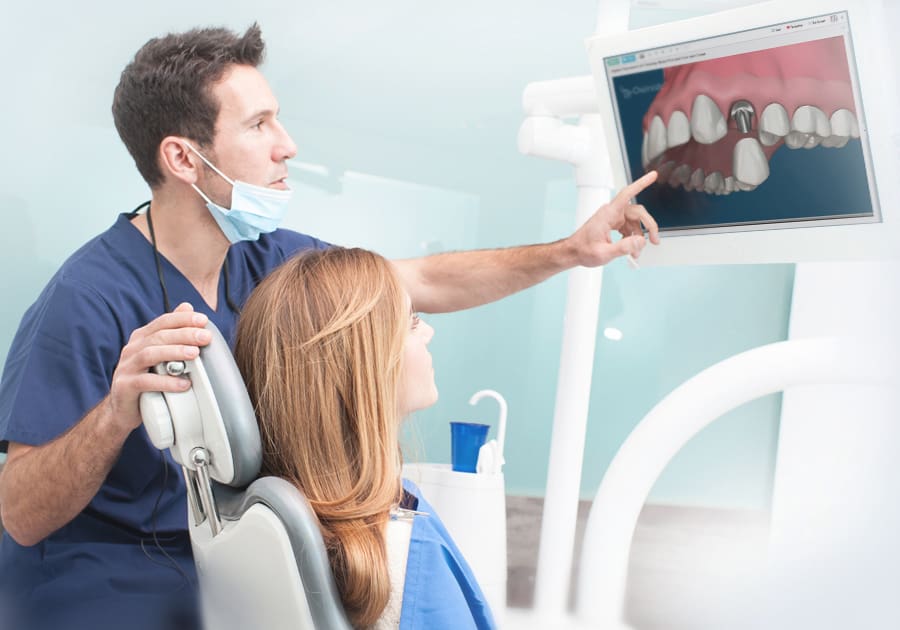Last updated on January 17th, 2024 at 04:00 pm
 Do you know what your case acceptance rate (percentage) is?
Do you know what your case acceptance rate (percentage) is?
And if so, are you calculating it correctly?
It’s an incredibly important metric for measuring practice performance, but I’ve found that calculating case acceptance rate correctly can be a little tricky, so we tend to get lazy and just go off of feel or memory. You feel like a patient hasn’t told you “no” in a while, so your case acceptance rate must be good! This gives an incorrect representation.
In fact, I would say the majority of dentists I speak with during our free seminars tell me, “My case acceptance is great! My patients all accept treatment. I have no problems there.” And yet…production is lower than they’d like it to be, there are holes in the schedule, collections are a problem, etc.
Some dentists even tell me their case acceptance rate is “100%.” In these instances, I usually find that they aren’t tracking it in a way that’s useful for measuring practice performance.
(Related: 3 Ways to Boost Case Acceptance)
The most common errors I find in measuring case acceptance rate are:
- Counting anything the patient accepts as 100% acceptance—e.g. the doctor diagnosed 4 crowns and a filling, and the patient only did 1 crown and the filling, and that’s being counted as “case acceptance.”
- Only presenting treatment that the insurance will cover or only what you assume the patient will pay for—meaning that a large percentage of the time, you’re not truly getting case acceptance for the ideal treatment to fully restore health, function, and aesthetic.
- Patients are nodding along to the doctor and telling them “Yes”…but then when they go up to the front to hear the price, they disappear. The doctor thinks they themselves are doing a great job, but “the front desk must be messing it up” or patients are canceling for mysterious reasons.
- Not tracking the actual numbers, so you don’t realize how many patients are actually failing to complete their treatment plans.
- Using a number the software showed you, which is problematic and inaccurate for reasons I’ll cover below.
 These things are misleading and can cover up inadequacies in your practice performance. And if case acceptance is lower than it should be, fixing it is the #1 most important way to immediately increase production and profit.
These things are misleading and can cover up inadequacies in your practice performance. And if case acceptance is lower than it should be, fixing it is the #1 most important way to immediately increase production and profit.
So in this post, let’s go over some tips for tracking your case acceptance rate correctly, in a way that’s actually useful for implementing positive changes in your practice.
Calculate your case acceptance rate based on “Dollar value of treatment presented vs. dollar value produced.”
You’ll have to track this number yourself (or your Office Manager or Treatment Coordinator may be able to help keep track). I’m not aware of any software that will automatically track it. But it’s worth the extra effort to do it manually, I promise.
(Related: How Changing My Mind in Case Presentations Helped Me Increase Treatment Acceptance)
This is the only way to get an accurate depiction of how well you’re doing with case acceptance.
If you present three crowns, two fillings, and an SRP, but the patient only does one crown and filling, then how do you measure toward your case acceptance rate? With the dollar value!
So, just keep a log of dollar value presented and dollar value produced for each patient throughout the month. It could be tracked in an Excel spreadsheet or even with pen and paper.
It might look like this:
JUNE
| Patient | $ Value Presented | $ Value Produced |
| Joe B | $5,000 | $2,800 |
| Suzy S | $1,200 | $1,200 |
| John H | $900 | $450 |
| Mary M | $2,800 | $1,550 |
| Jared E | $850 | $0 |
| Bill B | $1,750 | $1,150 |
| Total | $12,500 | $7,150 |
In this example, the case acceptance rate would be 57%.
If the doctor in this example just went off of memory, it may have seemed like only one patient failed to accept treatment. But by tracking the actual numbers, they can now see that they’re falling short by 43%—meaning to that degree, patients aren’t getting fully healthy and the practice is underproducing.
Not to mention—some doctor’s don’t even bother presenting the full treatment plan if they know insurance won’t cover it, so that percentage would be even worse if they included everything they diagnosed to fully restore form, function, and aesthetic.
As a note: If you always have your patients pre-pay before scheduling treatment, you can use “Dollar value of treatment presented vs. dollar value paid” instead of using “produced.” But if you’re not having everybody pre-pay, you need to use “produced,” because otherwise, you’ll be waiting until bills are collected from the patient and insurance before you can go back and enter the numbers, which becomes difficult to keep track of.
Don’t use the number your software shows you for case acceptance
 I generally find that the reports your software gives you for case acceptance can be confusing and inaccurate.
I generally find that the reports your software gives you for case acceptance can be confusing and inaccurate.
(Related: How Your Hygienist Can Help Increase Case Acceptance)
For instance, if you treatment plan 4 crowns, but the patient only accepts 3, you now need to create a new treatment plan in the software for 3 crowns. But that old 4-crown treatment plan is still hanging around “unaccepted,” and it makes the case acceptance numbers wonky.
It’s much more accurate to go by “Dollar value presented vs. dollar value produced” and keep track of it yourself.
Present everything the patient needs—not just what you think they’ll pay for
I’m not going to try to give advice on how to diagnose or treatment plan for your patients. Those are clinical decisions that are up to you as their doctor.
But I will say one thing: Present treatment based on what you feel is best for your patient’s health. Don’t let insurance coverage or finances determine what you present to the patient.
 If the patient is not qualified financially for that treatment plan, you can always work with them and adjust it towards something you’re both comfortable with. But first, let them know about everything that’s going on and educate them on how it can be fixed.
If the patient is not qualified financially for that treatment plan, you can always work with them and adjust it towards something you’re both comfortable with. But first, let them know about everything that’s going on and educate them on how it can be fixed.
I’ve seen many doctors make a mistake by making assumptions about what the patient would or wouldn’t pay for.
In fact, one of our clients spoke at the MGE Communication & Sales Seminars last month, and he talked about a patient he’d seen recently that surprised him. He had assumed that this patient, an Uber driver by trade, would not be in a position to do a full-arch restoration. But he let the patient know what could be done and told him the price anyways, and the patient said yes and paid. A $35,000 case! Turns out, the patient would be getting married soon and it was worth it to him to figure out the finances for it.
(Related: The “Right” Words to Use During Case Presentations)
Sometimes a wealthy person covered in jewelry and designer handbags won’t spend a cent on their teeth, but a waitress will move mountains to get their teeth fixed. How much they care about their health matters much more than their financial position.
I know these treatment planning decisions can be subjective sometimes—you could put a crown on those teeth with old fillings or you could keep an eye on them for a while, and the patient has other more urgent issues to address.
In this case, just ask yourself, “If it were my mouth, what would I do?” And present that to the patient.
If you feel uncomfortable presenting a larger treatment plan to your patient and informing them of the cost, then come to the MGE Communication & Sales Seminars.
At these seminars, we give you the tools to make the case presentation and financial discussion smooth and easy, so you can focus on the patient’s health—not their insurance plan or their wallet. The average attendee of these seminars adds an extra $288,000 per year to their practice—not because they focus on money, but because they focus on doing the full treatment plan the patient needs to get healthy.
It’s a win-win for you and the patient. They get healthy and your practice thrives.
I hope this article helps! And if you have any questions, schedule a free consultation here or contact me at any time at JeffS@mgeonline.com.



Good Morning
I Need a Follow up patients form and if patient has a tooth pain How to ask and what to ask the questions to the patients Could you Please guide me
Hi Khalid, We have a sample New Patient Intake Form, as well as a phone skills E-Book which might help. Here are the links: https://mgeonline.com/np-intake-form/ and the e-book: https://mgeonline.com/the-mge-new-patient-phone-scripts-ebook/